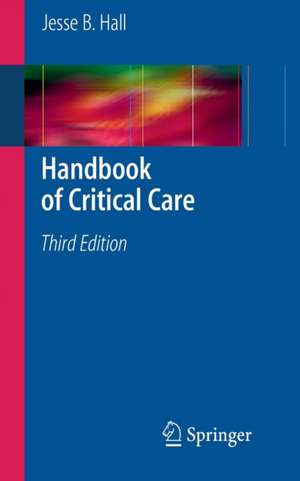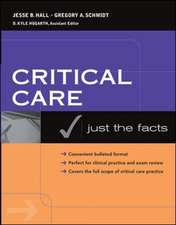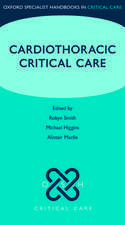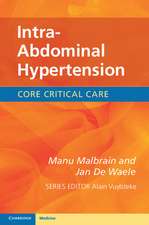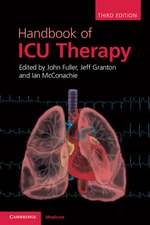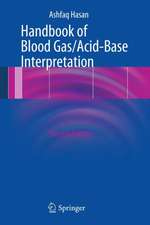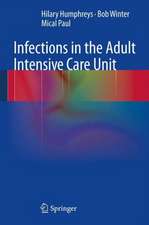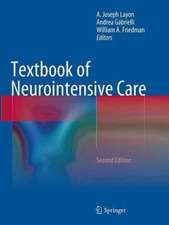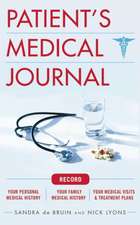Handbook of Critical Care
Editat de Jesse B. Hallen Limba Engleză Paperback – 26 iul 2009
Preț: 366.19 lei
Preț vechi: 385.47 lei
-5% Nou
70.07€ • 73.16$ • 57.99£
Carte tipărită la comandă
Livrare economică 04-18 aprilie
Specificații
ISBN-10: 1848827237
Pagini: 275
Ilustrații: XIII, 275 p.
Dimensiuni: 127 x 203 x 12 mm
Greutate: 0.35 kg
Ediția:3rd ed. 2009
Editura: SPRINGER LONDON
Colecția Springer
Locul publicării:London, United Kingdom
Public țintă
Professional/practitionerDescriere
Previously published as Handbook of Critical Care by CMG this book is a pocket-sized basic intensive care manual. The handbook is divided into 15 chapters, eight substantial ones covering the major organ systems, as well as infection, nutrition, physical injury and toxicology, and brief chapters on scoring systems and obstetrics. Many of the sections are loaded with very clear pictures, comparative tables, diagrams and lists, and provide more than adequate information for juniors training in intensive care medicine. The definitions, aetiology, clinical features and differential diagnoses are well covered. Excellent use is made of bullet points and numbering, which vastly increases the clarity of presentation compared with many other books that are pitched at a similar audience.
Cuprins
Approach to critical care, Analgesia and sedation in the intensive care unit, Cardiovascular system, Respiratory system, Acute renal failure, Neurologic emergencies, Endocrine system, Gastrointestinal disorders, Infection and inflammation, Hematological emergencies, Nutritional support, Physical injury, Toxicology, Scoring systems, Obstetric emergencies
Recenzii
"This is the third edition of a pocket-sized guide for the newcomer in the intensive care unit. … this is a quick read for new students or trainees. Medical students or junior residents exposed to the intensive care unit are an appropriate audience for this guide produced by four faculty members in pulmonary and critical care medicine at the University of Chicago. … this must be considered a book for junior members of the critical care team." (David J. Dries, Doody’s Review Service, October, 2009)
Textul de pe ultima copertă
Critical care is an exciting field with diverse and complex challenges. These challenges include identifying pathophysiology in the individual patient, integrating care providers from multiple disciplines, addressing social concerns in the sick or dying patient, to name but a few. As a result of this complexity, care in the intensive care unit must be guided by a thoughtful and organized approach.
Written as a teaching aid for residents and fellows in intensive care and emergency medicine, this revised edition of the Handbook of Critical Care is also a valuable reference for all medical professionals in the critical care team. The 15 chapters in this pocket-sized basic intensive care manual include eight substantial sections covering the major organ systems, as well as infection, nutrition, physical injury and toxicology, and brief chapters on scoring systems and obstetrics. The chapters feature numerous pictures, comparative tables, diagrams and lists, and provide essential information for juniors training in intensive care medicine. The definitions, etiology, clinical features and differential diagnoses are well covered, while extensive use of bullet points and numbering increases the clarity of presentation enabling readers to quickly get to the key learning points.
Caracteristici
Contains comprehensive practical data for residents and fellows in intensive care
